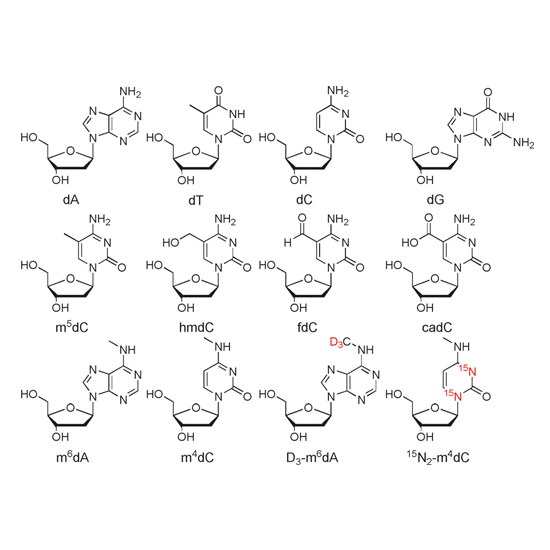Quantitative LC–MS Provides No Evidence for m6dA or m4dC in the Genome of Mouse Embryonic Stem Cells and Tissues
30-Mar-2017
Angew. Chem. Int. Ed., International Edition: DOI: 10.1002/anie.201700424
Angew. Chem. Int. Ed., online article
Until recently, it was believed that the genomes of higher organisms contain, in addition to the four canonical DNA bases, only 5-methyl-dC (m5dC) as a modified base to control epigenetic processes. In recent years, this view has changed dramatically with the discovery of 5-hydroxymethyl-dC (hmdC), 5-formyl-dC (fdC), and 5-carboxy-dC (cadC) in DNA from stem cells and brain tissue. N6-methyldeoxyadenosine (m6dA) is the most recent base reported to be present in the genome of various eukaryotic organisms. This base, together with N4-methyldeoxycytidine (m4dC), was first reported to be a component of bacterial genomes. In this work, we investigated the levels and distribution of these potentially epigenetically relevant DNA bases by using a novel ultrasensitive UHPLC–MS method. We further report quantitative data for m5dC, hmdC, fdC, and cadC, but we were unable to detect either m4dC or m6dA in DNA isolated from mouse embryonic stem cells or brain and liver tissue, which calls into question their epigenetic relevance.











